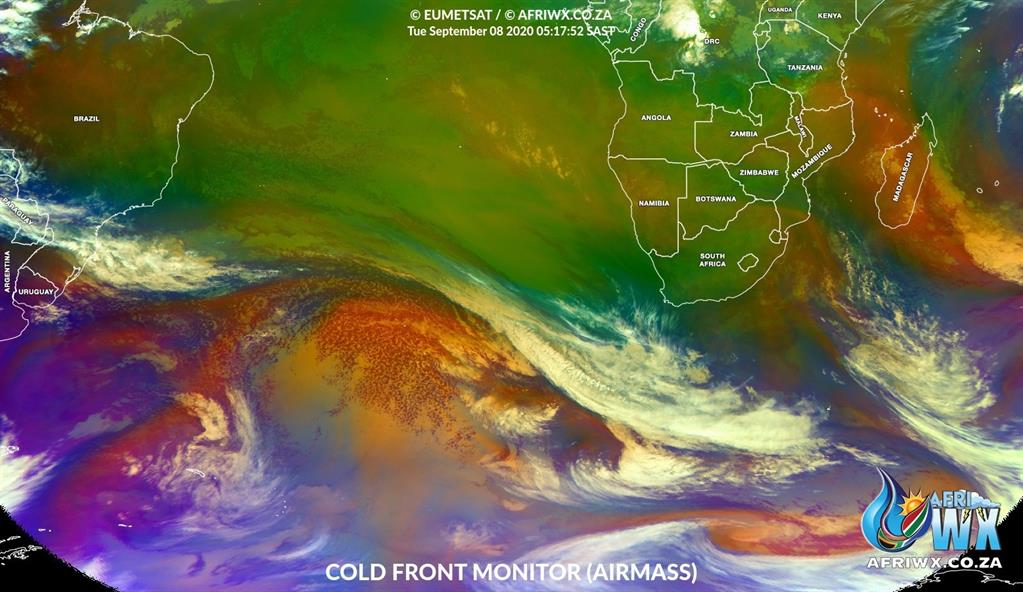Above-normal rainfall forecast
Namibians can look forward to good rains this season, the weather bureau has indicated.
ELLANIE SMIT
WINDHOEK
With the welcome rainfall that fell over large parts of the country this past weekend, the Namibia Meteorological Service has now issued its seasonal rainfall outlook.
Large parts of Namibia can expect above-normal rainfall from January to March next year, it said.
According to the weather office, there is a 60% chance of weak La Niña conditions developing during September to November.
El Niño is associated with depressed rainfall over Namibia and La Niña with enhanced showers.
October to December
During the period from October to December, large parts of the country are likely to receive normal to above-normal rainfall with pockets of normal to below-normal rainfall.
Above-normal rainfall is likely in parts of Otjozondjupa and Kunene during the same period.
Normal to above-normal rainfall is predicted during the period January to March next year over the bulk of the country, with pockets of normal to below-normal rainfall in a few constituencies. The weather office pointed out that the Indian Ocean Dipole (IOD) index passed the threshold level of -0.4 degree Celsius during August, but is forecast to remain within the neutral phase till early January 2021.
IDO phases
The IDO has three phases, namely neutral, positive and negative. The warm phase, together with its associated easterly winds, are more favourable for enhanced rainfall over Namibia. According to the weather office, statistical and dynamic climate prediction models were used to determine the likelihood of above-normal, normal and below-normal rainfall for each area for overlapping three-monthly periods: October-November-December and January-February-March.
Below-normal is defined as within the driest third of rainfall amounts of the 30-year (1961 to 1990, 1971 to 2000 and 1981 to 2010) rainfall amounts, while above-normal rainfall is defined as within the wettest third of recorded rainfall amounts. Normal falls within the middle third, centred on the climatological median.
WINDHOEK
With the welcome rainfall that fell over large parts of the country this past weekend, the Namibia Meteorological Service has now issued its seasonal rainfall outlook.
Large parts of Namibia can expect above-normal rainfall from January to March next year, it said.
According to the weather office, there is a 60% chance of weak La Niña conditions developing during September to November.
El Niño is associated with depressed rainfall over Namibia and La Niña with enhanced showers.
October to December
During the period from October to December, large parts of the country are likely to receive normal to above-normal rainfall with pockets of normal to below-normal rainfall.
Above-normal rainfall is likely in parts of Otjozondjupa and Kunene during the same period.
Normal to above-normal rainfall is predicted during the period January to March next year over the bulk of the country, with pockets of normal to below-normal rainfall in a few constituencies. The weather office pointed out that the Indian Ocean Dipole (IOD) index passed the threshold level of -0.4 degree Celsius during August, but is forecast to remain within the neutral phase till early January 2021.
IDO phases
The IDO has three phases, namely neutral, positive and negative. The warm phase, together with its associated easterly winds, are more favourable for enhanced rainfall over Namibia. According to the weather office, statistical and dynamic climate prediction models were used to determine the likelihood of above-normal, normal and below-normal rainfall for each area for overlapping three-monthly periods: October-November-December and January-February-March.
Below-normal is defined as within the driest third of rainfall amounts of the 30-year (1961 to 1990, 1971 to 2000 and 1981 to 2010) rainfall amounts, while above-normal rainfall is defined as within the wettest third of recorded rainfall amounts. Normal falls within the middle third, centred on the climatological median.





Comments
Namibian Sun
No comments have been left on this article